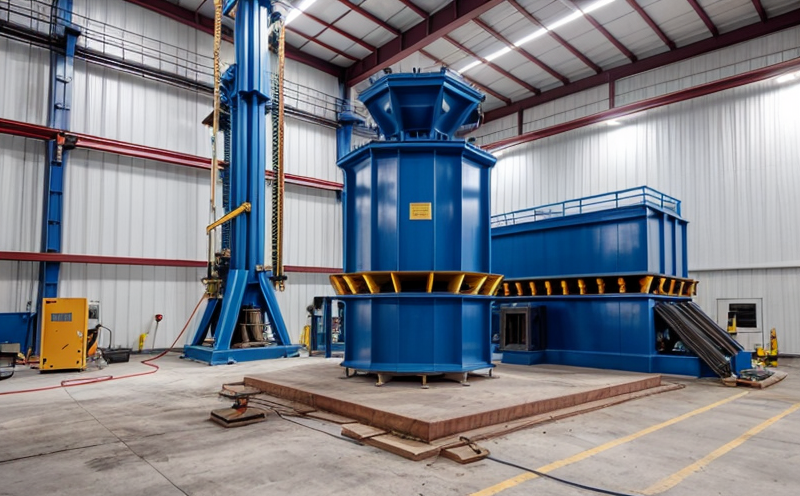ASTM E756 Composite Material Vibration Damping Testing
The ASTM E756 standard provides a robust framework for evaluating vibration damping properties of composite materials. This testing is crucial in sectors such as aerospace, automotive, and electronics where the performance of structural components under dynamic loading conditions can significantly impact durability and reliability.
ASTM E756 defines a method to measure the loss factor (tan δ) of composite materials at specified frequencies using a forced vibration technique. The specimen is subjected to sinusoidal excitation while its displacement, velocity, and acceleration are monitored. This allows for an accurate determination of how effectively a material dissipates vibrational energy.
The process involves creating test specimens that closely mimic real-world conditions. Specimen preparation includes cutting the composite into precise dimensions according to ASTM E756 specifications. The choice of frequency range is critical; it should cover the expected operational spectrum for which the material will be used. For instance, in aerospace applications, this might span from 10 Hz to 1 kHz.
The testing apparatus typically consists of a shaker system capable of delivering controlled sinusoidal excitation and a data acquisition system for recording displacement, velocity, and acceleration. The specimen is clamped onto the shaker table, ensuring minimal contact area to avoid bias in measurements. Data analysis involves plotting loss factor against frequency to identify the maximum damping efficiency.
Understanding the vibration damping properties of composite materials is vital because it influences structural integrity under dynamic stress. Damping reduces oscillations and prevents resonances that could lead to material fatigue or failure. This testing helps ensure that materials meet stringent performance criteria, contributing to safer and more reliable products.
The ASTM E756 method provides a standardized approach for comparing different composite materials based on their vibration damping capabilities. This is particularly important in sectors where small variations in damping can translate into significant differences in product longevity and safety. By adhering to this standard, manufacturers can ensure consistent quality across batches of material.
Real-world applications of ASTM E756 testing include the development of lightweight yet strong materials for aircraft structures, automotive components, and electronic enclosures. In aerospace, for example, materials like carbon fiber reinforced polymers (CFRP) are subjected to rigorous vibration tests to ensure they can withstand harsh environments without compromising performance.
Compliance with ASTM E756 is essential for industries subject to regulatory requirements or those seeking certification from recognized bodies. It ensures that products meet the highest standards of quality and reliability, enhancing consumer trust and safety.
Benefits
- Ensures compliance with international standards (ASTM E756)
- Achieves accurate measurement of loss factor (tan δ) across specified frequency ranges
- Promotes consistent quality through standardized testing procedures
- Supports the development and certification of high-performance composite materials
- Enhances product durability by identifying optimal damping properties
- Facilitates comparison between different composite materials for performance benchmarking
- Aids in meeting regulatory requirements and industry-specific standards
- Improves overall safety and reliability in critical applications such as aerospace and automotive sectors
Quality and Reliability Assurance
- All testing equipment is calibrated regularly to ensure precision and accuracy.
- Data acquisition systems are validated against known standards before use.
- Specimen preparation adheres strictly to ASTM E756 specifications to avoid bias in results.
- Frequency ranges are carefully selected based on the expected operational conditions of the materials being tested.
- The testing environment is controlled to minimize external influences that could affect measurement accuracy.
By maintaining these rigorous quality control measures, we ensure that every ASTM E756 test conducted at our laboratory delivers reliable and repeatable results. This commitment to precision and consistency contributes significantly to the trustworthiness of our services across various sectors.
Customer Impact and Satisfaction
Our comprehensive ASTM E756 testing service has been instrumental in helping customers achieve their quality assurance goals efficiently. By providing accurate and reliable data, we enable our clients to make informed decisions about material selection and design optimization. This leads to enhanced product performance and reliability, ultimately benefiting end-users by delivering safer and more durable products.
Customer satisfaction is a key priority for us. We offer detailed reports that not only summarize the test results but also provide actionable insights based on our expertise. Regular communication with customers ensures they are kept informed throughout the testing process, fostering transparency and trust. Our commitment to excellence has earned us a reputation as a trusted partner in quality assurance across various industries.





